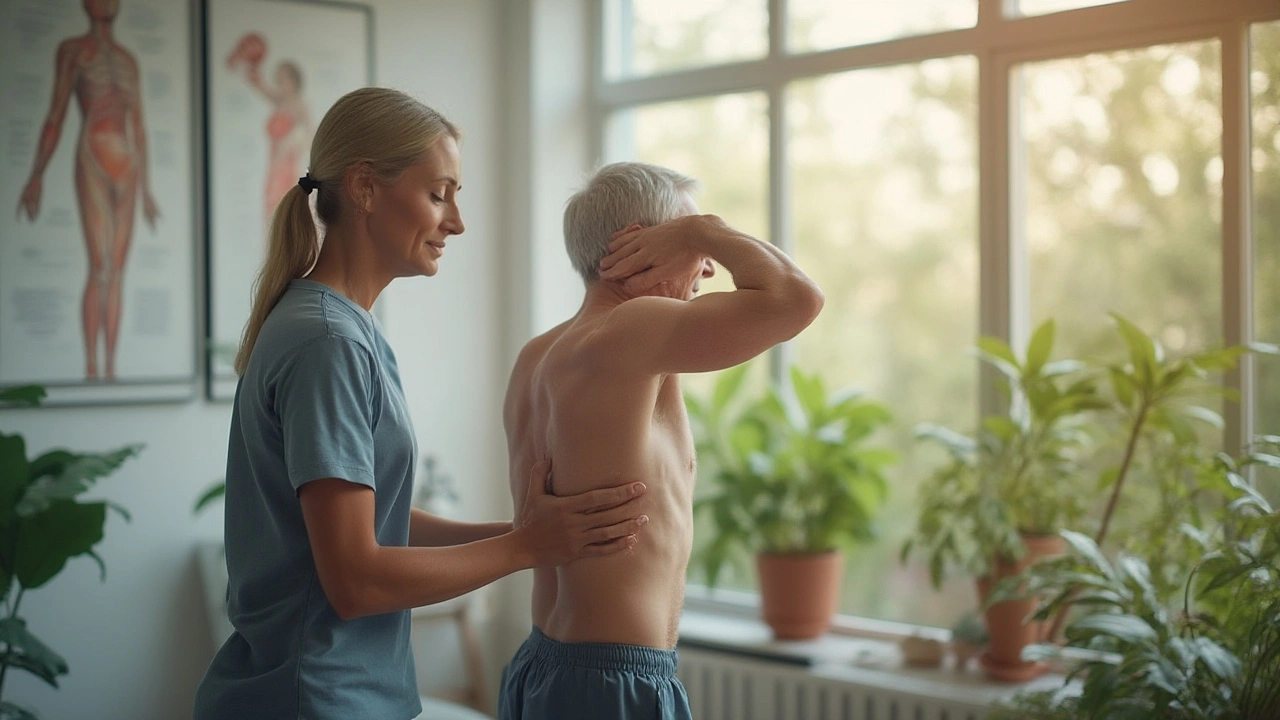Posture Correction: Simple Steps to Fix Slouching
Slouching isn't just about how you look. It often leads to neck pain, tired shoulders, and that nagging low-back ache. The good news: small changes matter. You don't need fancy equipment or hours at the gym. Follow a few simple moves and habits, and you'll feel better within days.
Quick posture fixes you can do today
Sit tall: slide your pelvis forward on the chair so your lower back feels supported, feet flat, knees at hip level. Raise your screen so the top of it is at eye height. Keep the keyboard close so you don't reach. Use a small cushion for lower-back support if the chair is flat.
Phone posture matters: hold the phone at eye level instead of looking down. When standing, balance weight evenly on both feet. If you stand a lot, shift weight from one foot to the other every few minutes — don’t lock your knees.
Set a timer: every 30–45 minutes stand up, stretch, or walk 30 seconds. This breaks the slump and resets your shoulders. Sticky notes or phone reminders work well if you forget.
Build long-term posture: exercises and daily habits
Do these simple exercises daily. They take 10–15 minutes and target the muscles that hold you upright:
- Chin tucks: sit or stand tall, gently pull chin back until a double chin forms, hold 5 seconds. Repeat 10 times. This strengthens neck stabilizers and reduces forward-head posture.
- Shoulder blade squeezes: squeeze your shoulder blades together, hold 5 seconds, repeat 10–15 times. Great for rounded shoulders.
- Wall angels: stand with back against the wall, arms in a ’W’ shape, slide up to ’Y’ and back. Do 8–12 reps. This improves shoulder mobility and upper-back control.
- Plank or glute bridge: pick one. Plank builds core support; glute bridge trains hips and lower-back stability. 2 sets of 20–45 seconds each is a good start.
Use posture-friendly habits: carry bags on both shoulders when possible, sleep on your back or side with a pillow that keeps your neck neutral, and swap high heels for lower, stable shoes if you wear them often.
Be consistent. Short, daily practice beats long, irregular sessions. Most people notice better comfort and less fatigue in two to six weeks when they stick to these routines.
When to get help: if pain is sharp, causes numbness, or limits walking/arm use, see a healthcare professional. A physical therapist can give tailored exercises and hands-on help. If you suspect a structural issue, a doctor can rule out serious causes.
Small steps add up. Change one thing today — raise your screen or do five chin tucks — and build from there. Better posture is more about daily choices than perfect form every minute.

